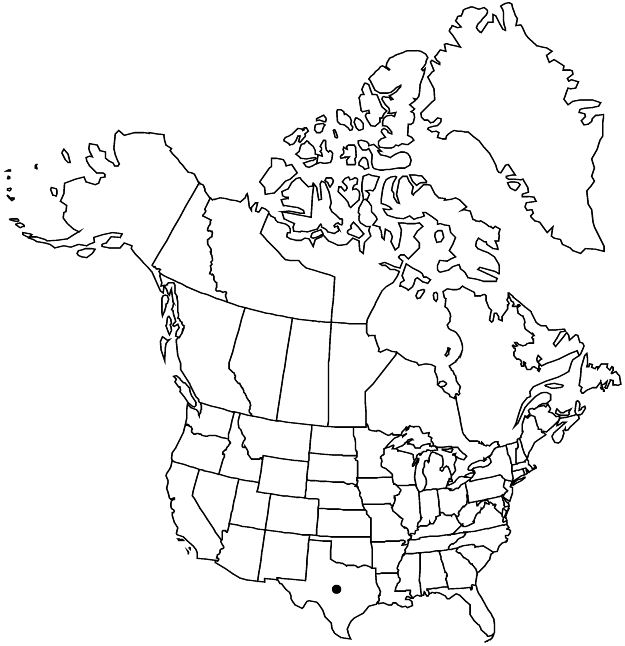Acalypha radians
Rep. U.S. Mex. Bound. 2(1): 200. 1859.
Herbs or subshrubs, perennial, 1.5–4 dm, dioecious. Stems prostrate to ascending, short-pubescent and hirsute. Leaves: petiole 0.4–1.6 cm; blade reniform or suborbiculate, 0.5–1.5 × 0.8–2 cm, base cordate or rounded, margins deeply crenate, apex rounded. Inflorescences unisexual, terminal (staminate and pistillate) and axillary (pistillate); staminate peduncle 0.5–3 cm, fertile portion 1–4(–5) cm; pistillate peduncle 0.1–0.5 cm, fertile portion 1–2.5 × 0.8–1.2 cm; allomorphic pistillate flowers absent. Pistillate bracts crowded (inflorescence axis not visible between bracts), 7–10 × 12–16 mm, abaxial surface hirsute, sessile- and stipitate-glandular; lobes (7–)8–10(–13), spatulate, 1/2 bract length. Pistillate flowers: pistil 3-carpellate; styles multifid or laciniate. Capsules smooth, pubescent and hirsute. Seeds 1.8–2 mm, minutely pitted.
Phenology: Flowering and fruiting spring–fall.
Habitat: Grassy openings, dunes, and oak or mesquite woodlands, usually on deep sand.
Elevation: 0–200 m.
Distribution

Tex., Mexico (Tamaulipas).
Discussion
Acalypha radians is found in the flora area from the Edwards Plateau south to the Mexican border.
Selected References
None.